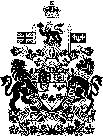
CANADA
Public Service 2000
Second Annual Report to The Prime Minister on The Public Service of Canada
Glen Shortliffe
Clerk of the Privy Council and
Secretary to the Cabinet
March 25, 1994
Dear Prime Minister,
Pursuant to section 47.1 of the Public Service Employment Act, I am pleased to submit to you this Annual Report on the Public Service of Canada. This Report covers almost exactly the period of my tenure as Clerk of the Privy Council and Secretary to the Cabinet. I was sworn in on July 1, 1992 and, as announced, I will be retiring on March 28, 1994. This is also the first Report since the Clerk of the Privy Council assumed formal responsibility as Head of the Public Service in April 1993, with the proclamation of the Public Service Reform Act.
The past year has been a memorable one for the country and no less so for the Public Service of Canada. In the time since my predecessor, Paul Tellier, submitted the first Clerk's Report in June 1992, there have been many initiatives and events that have had a significant impact on the Public Service, not the least of which was a general election and the arrival of the new Government. But even internally, decisions such as successive reductions in operating budgets, the continuing freeze on salaries and the organizational changes of June and then November 1993 have all affected the Public Service directly.
Despite increasing public demands for services, and ever-diminishing resources, public servants from coast to coast have continued to do a first-class job. Their sense of duty, their dedication to service and their commitment to excellence should be a source of pride to them and to all Canadians.
This Report is a personal statement, reflecting my views of what has happened to the Public Service, what public servants have done that is of wider interest and significance, and how I see the challenges ahead. It also contains a brief "report on progress" in the current process of change and renewal.
In submitting this Report, I am reminded of how privileged I have been to serve as Head of an organization that is the largest and certainly among the most important in Canada. And I am struck by the extraordinary changes I have seen during nearly 32 years of service, in four departments, both in Canada and abroad. I began my career as a junior officer in External Affairs when that Department was housed in the East Block on Parliament Hill and much of the rest of government could fit into a few older buildings in central Ottawa. I am concluding it in the Langevin Block, with a fine view of my starting place just across Wellington Street. But what is constant in the architecture of Ottawa belies what has changed: between 1962 and 1994, the Public Service has altered immensely, and in my view much for the better.
Where 30 years ago, business in the Public Service was done entirely in English, we are now a proudly bilingual institution, able to serve Canadians in the language of their choice from British Columbia to Newfoundland. Whereas in the Public Service of the 1960s, there were virtually no women in senior positions, I am now leaving a Privy Council Office in which women occupy almost exactly 50 percent of the positions at senior levels, and my successor is a woman. That is something no other major country can boast.
Where "management'' was once a concept reputedly scorned inside the Public Service, it is now esteemed; where we once talked of "administration", we now realize the word is "leadership" where we once emphasized caution and control; now we emphasize service and innovation. And of course there has been a revolution in technology. We in the Public Service are among the country's leading innovators in the application of information technology in large organizations. The change in how we do our work has been profound, and even greater changes are on the horizon.
I note these longer-term changes because I believe that only in this larger context can we fully appreciate the changes that have been taking place in more recent years - they are part of a long-term process of change and renewal.
We are now looking toward a new century. I have no doubt that the Public Service of Canada will continue to adapt and evolve - in response to the changing needs of the country in a changing world and the evolving priorities of the Government of the day. But one thing will not change: our mission will always be that of providing top-quality, professional advice and support to the Government and the best possible service to Canadians.
As we move forward in this continuing process of change and renewal, I am heartened by the confidence you have so clearly expressed in the Public Service; by your reaffirmation of traditional public service values; and by the very positive relationship that you and I have enjoyed during these first months of your administration.
I have no doubt that under your leadership, and that of the Honourable Marcel Massť as Minister responsible for Public Service Renewal, the Public Service of Canada will meet the year 2000 better equipped and better able to serve the needs of Canadians. I wish you and my successor, Jocelyne Bourgon, the very best in your stewardship of this great national institution.
Yours sincerely,
Glen Shortliffe
The Wider Context of Renewal
Constitutional Reform
Restraint
Passage of Bill C-26: the Public Service Reform Act
Government Reorganization
The Election of and Transition to a New Government
Restructuring within Departments
Service to the Public
People Management
Internal Communications
Stability
Canadian Cataloguing in Publication Data